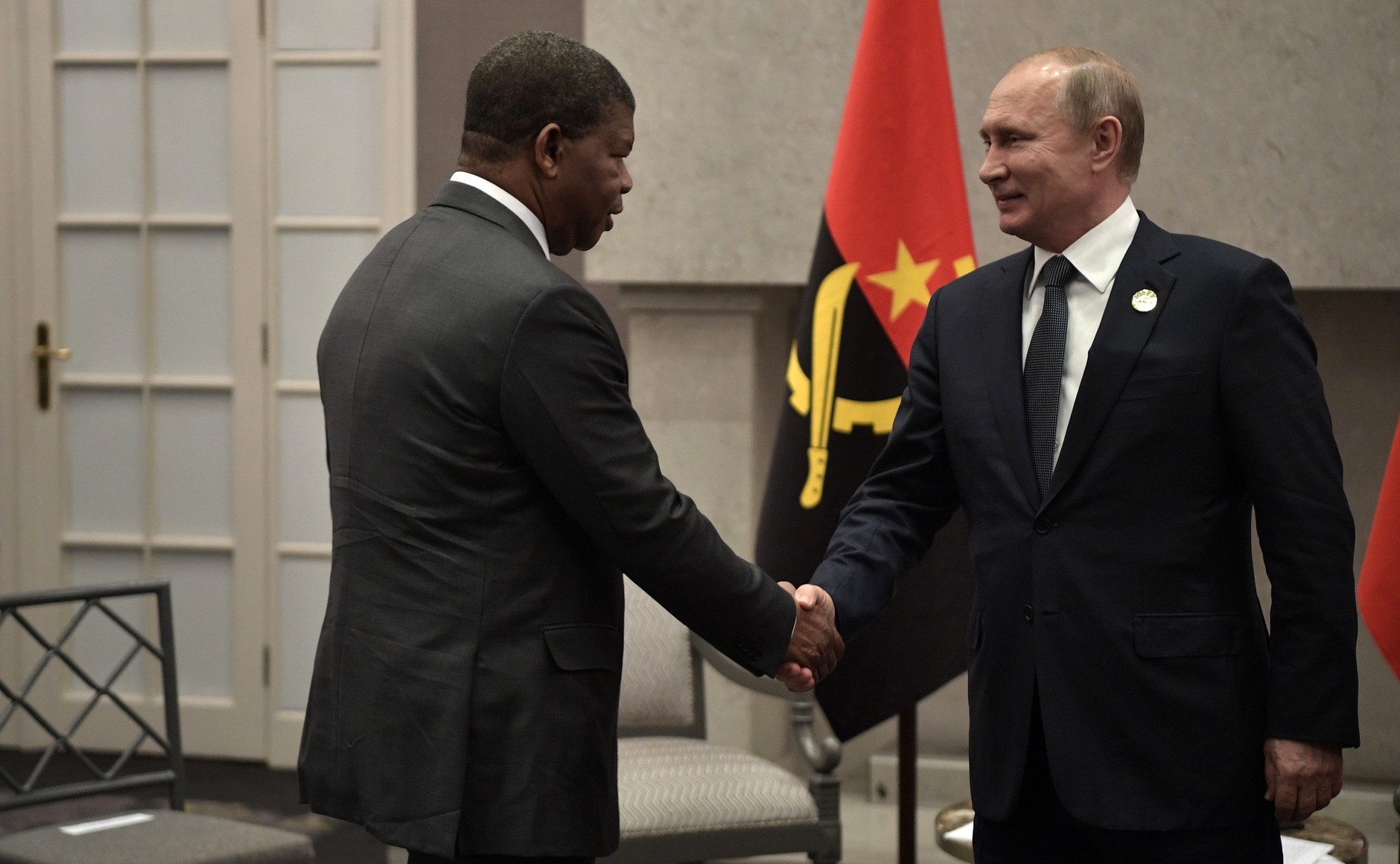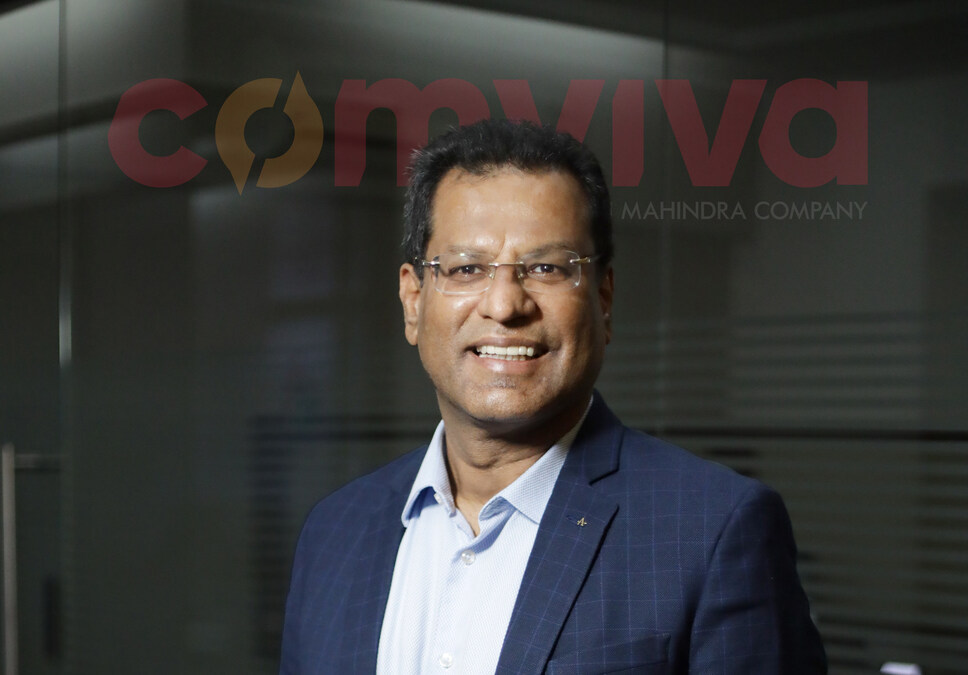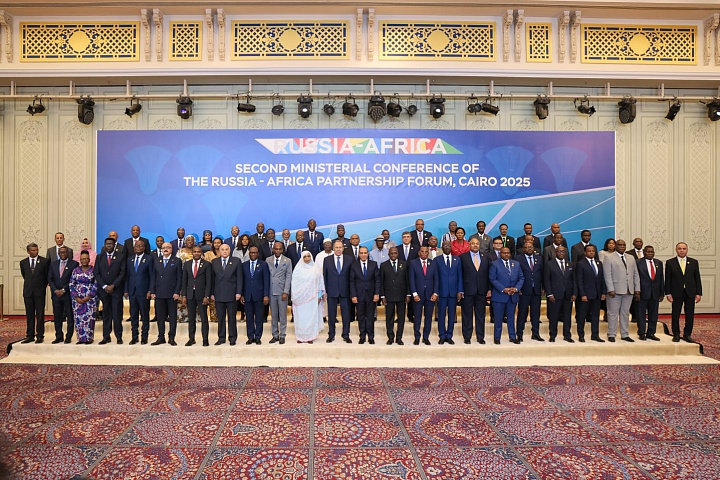World
Russia and Angola: Cooperating On Trade, Arms Delivery and Natural Resource Exploration

By Kester Kenn Klomegah
Russia is ready to raise its full-fledged bilateral ties and strengthen multifaceted cooperation by signing a series of agreements with Angola, one of Russia’s key partners in the African region, during the meeting scheduled early April between President Vladimir Putin and Angolan counterpart Joao Manuel Goncalves Lourenco in the Kremlin, Moscow.
Putin has expressed his confidence that Joao Lourenco official visit marks a new stage in the development of bilateral relations between the two countries. Putin has had bilateral connectivity with this southern African country, for example, during the leadership of Jose Eduardo Dos Santos who visited in October 2006.
Russia-Angolan relations have been developing actively “on the principles of mutual respect, trust and sincere friendship.” It is worth saying that Russia and Angola successfully cooperate in resolving actual international and regional problems and in ensuring security, law and order in the world.
In July 2018, Vladimir Putin held a meeting with President of Angola Joao Lourenco on the sidelines of the BRICS Summit. “Russia and Angola have longstanding and friendly relations that we greatly treasure. We are actively cooperating in political matters, security, and at international organizations. Our trade is quite modest so far, but in general, we have good projects that can be implemented. Our military and technical cooperation is also developing,” Putin told his Angolan Joao Lourenco.
During the Cold War, Russia always supported the Angolan people and helped achieve what is now treasure most of all: independence. Even after independence, Angola has enjoyed political freedom for 42 years, Russia never turned its back on Angola; it always supported and helped us fight the apartheid regime, which was a threat to Angola and the entire African continent.
“Rest assured that the people of Angola will never forget the friendship between our countries that was forged in battle. Now, we are focused on development. We want our country to develop in all areas. Speaking about economic cooperation, we are counting on interaction with Russia. First of all, Russian enterprises work in our mining complex. But, we would also like Russian businesses to be represented in other industries,” Joao Lourenco, in his turn, told Putin.
Russia plans large-scale economic engagement with Angola. Last year February, during a working meeting between Vladimir Putin and Alrosa CEO Sergei Ivanov in Kremlin, it came out that Russia’s Alrosa plans to develop one of the largest diamond deposits, Luaxe in Angola. “We are currently conducting a feasibility study. We have met with the President of Angola. Everything is on schedule. I am certain it will be a significant asset that will help us maintain our leadership,” according to Sergei Ivanov.
Soon, the truth in his words comes to fruition. In March 2019, Joao Lourenco gave an exclusive interview to a Russian media, Itar-TASS, he outlined some of his plans. The Angolan leader hinted that his country was ready to undertake the building factories to manufacture Russian weapons and military equipment for the African market.
“As for our military and technical cooperation with Russia – it will continue and be deepened. We would like to evolve from our current state of purchasers of Russian military equipment and technologies towards becoming the manufacturers and having an assembly point of Russian military equipment in our country,” he told the news agency.
Russia and Angola have military and technical cooperation. In 2018, Russia agreed to supply arms and military equipment to Angola worth US$2.5 billion, including spare parts for the Soviet-made weaponry, light weapons, ammunition, tanks, artillery and multi-purpose helicopters.
Besides, there are a number of Russia companies interested in Angola. For example, Mazepin’s companies considers an important step building nitrogen fertilizer plant in Angola. Zarubezhneft, an intermediary for the state interests in the field of fuel and energy complex on the international arena, plans to work in the oil and gas industry – from exploration and field construction to the pipeline systems construction and supply of equipment to the oil facilities.
Zarubezhneft has sealed a memorandum of understanding with Angola’s authorities to cooperate when exploring and producing from crude oil fields of that African country. For this purpose, the consortium eyes the Atlantic shelf of Angola, expecting to produce from it in partnership with Angola’s Sonangol and Dark Oil Company, which licenses for the area.
On the other hand, it was also reported in March 2017 that Angola had given two Russian companies the green light to build a major refinery complex and railroad. The US$12bn mega project put forward by companies Rail Standard Service and Fortland Consulting Company, which have set up a consortium with local partners.
Gustavo Plácido Dos Santos, Researcher at the Portuguese Institute of International Relations and Security (IPRIS), wrote recently that Angola has been on the frontline of Russia’s expansion in sub-Saharan Africa. Luanda enjoys strong historical ties with Moscow. Although political ties have failed to translate into deeper commercial interactions, it is worth highlighting Angola’s potential for Russian companies, especially in terms of mineral resources.
According to him, Sub-Saharan Africa is set to produce more gas than Russia by 2040. Thus, the region becomes a viable alternative for the European Union’s aim of diversifying energy sources away from Russia. In this sense, given the geographic proximity, countries such as Nigeria would be in the front line to satisfy Europe’s diversification goals. However, instability in Nigeria and its neighborhood positions Angola — one of Africa’s most stable energy producers — as a viable alternative.
Interesting to recall that back in June 2009, Dmitry Medvedev and Jose Eduardo dos Santos also held bilateral talks. A joint communique issued following the talks sets out the priority areas for developing the partnership between the two countries. The sectors in question include mining, energy, transport, telecommunications, military-technical cooperation, health and education.
Both leaders then witnessed the signing of a number of bilateral agreements, in particular, an intergovernmental agreement on air transport links, an agreement on encouragement and mutual protection of investment, and the medium-term program for economic and trade, science and technology as well as agreements on cooperation in geology and higher professional education.
In addition, there was a contract signed for the building and financing of Angola’s national satellite communications and broadcasting system, AngoSat. Energiya corporation reaffirmed its intention to fulfill the contract that envisions creation of a satellite network for telecommunication and broadcasting in Angola.
This April, some of the large-scale economic and investment projects crystallized in the documents signed covering projects in energy, minerals exploration, and high technology, in particular building a satellite communications system, and that of economic cooperation to a new level. There are the desires and the possibilities, but the need to reflect on setting up new financial mechanisms, according to South African based Senior Analyst on African policy, Kelvin Dewey Stubborn.
In his discussion for this article, Dewey Stubborn acknowledged that there are various forms of cooperation two largest state-owned companies, Zarubezhneft and Sonangol. There are a number of projects to develop and find new hydrocarbon deposits. This is certainly of interest because of very big players in the oil market, but this does not mean that Russians cannot cooperate in this field. Regarding the overall situation, Africa is a continent developing very dynamically, a continent on the rise, and second, Africa today has powerful countries that have chosen their own development paths.
Experts, such as Professors Vladimir Shubin and Alexandra Archangelskaya, Institute for African Studies in Moscow, have also argued that “both Angola and Russia still need to be more strategic in aligning their interests, and more proactive in carving out efficient bilateral instruments and mechanisms in order to promote economic exchanges and reap the benefits of a fully-fledged partnership.”
According to Wikipedia, compared to the Soviet era, trade between Russia and Angola is still minimal. In 2016, exports from Russia to Angola amounted to US$567.9 million and Angolan exports to Russia amounted to just US$14.94.
Angola has diamonds, oil, gold, copper and a rich wildlife, forest and fossil fuels. Since independence, oil and diamonds have been the most important economic resource. The Republic of Angola is a country in south-central Africa, the seventh largest by territorial size and bordered by Namibia to the south, Democratic Republic of Congo to the north and Zambia to the east, and on the west the Pacific Ocean.
Kester Kenn Klomegah writes frequently about Russia, Africa and the BRICS.
World
Comviva Wins at IBSi Global FinTech Innovation Award

By Modupe Gbadeyanka
For transforming cross-border payments through its deployment with Global Money Exchange, Comviva has been named Best In-Class Cross Border Payments.
The global leader in digital transformation solutions clinched this latest accolade at the IBS Intelligence Global FinTech Innovation Award 2025.
The recognition highlights how Comviva’s mobiquity Pay is helping shape a modern cross-border payment ecosystem that stretches far beyond conventional remittance services.
Deployed as a white label Wallet Platform and launched as Global Pay Oman App, it fulfils GMEC’s dual vision—positioning itself as an innovative payment service provider while digitally extending its core money transfer business.
The solution allows GMEC to offer international money transfers alongside seamless forex ordering and other services. These capabilities sit alongside a broad suite of everyday financial services, including bill and utility payments, merchant transactions, education-related payments, and other digital conveniences — all delivered through one unified experience.
“This award is a testament to Oman’s accelerating digital transformation and our commitment to reshaping how cross-border payments serve people and businesses across the Sultanate.
“By partnering with Comviva and bringing the Global Pay Oman Super App, we have moved beyond traditional remittance services to create a truly inclusive and future-ready financial ecosystem.
“This innovation is not only enhancing convenience and transparency for our customers but is also supporting Oman’s broader vision of building a digitally empowered economy,” the Managing Director at Global Money Exchange, Subromoniyan K.S, said.
Also commenting, the chief executive of Comviva, Mr Rajesh Chandiramani, said, “Cross-border payments are becoming a daily necessity, not a niche service, particularly for migrant and trade-linked economies.
“This recognition from IBS Intelligence validates our focus on building payment platforms that combine global reach with local relevance, operational resilience and a strong user experience. The deployment with Global Money Exchange Co. demonstrates how mobiquity® Pay enables financial institutions to move beyond remittances and deliver integrated digital services at scale.”
“The deployment of mobiquity Pay for GMEC showcases how scalable, API-driven digital wallet platforms can transform cross-border payments into seamless, value-rich experiences.
“By integrating remittances, bill payments, forex services, and AI-powered engagement into a unified Super App, Comviva has reimagined customer journeys and operational agility.
“This Best-in-Class Cross-border Payments award win stands as a testament to Comviva’s excellence in enabling financial institutions to compete and grow in a digitally convergent world,” the Director for Research and Digital Properties at IBS Intelligence, Nikhil Gokhale, said.
World
Russia Renews Africa’s Strategic Action Plan

By Kestér Kenn Klomegâh
At the end of an extensive consultation with African foreign ministers, Russian Foreign Minister, Sergey Lavrov, has emphasized that Moscow would advance its economic engagement across Africa, admittedly outlining obstacles delaying the prompt implementation of several initiatives set forth in Strategic Action Plan (2023-2026) approved in St. Petersburg during the Russia-Africa Summit.
The second Ministerial Conference, by the Russian Foreign Ministry with support from Roscongress Foundation and the Arab Republic of Egypt, marked an important milestone towards raising bilateral investment and economic cooperation.
In Cairo, the capital city of the Arab Republic of Egypt, Lavrov read out the final resolution script, in a full-packed conference hall, and voiced strong confidence that Moscow would achieve its strategic economic goals with Africa, with support from the African Union (AU) and other Regional Economic blocs in the subsequent years. Despite the complexities posed by the Russia-Ukraine crisis, combined with geopolitical conditions inside the African continent, Moscow however reiterated its position to take serious steps in finding pragmatic prospects for mutual cooperation and improve multifaceted relations with Africa, distinctively in the different sectors: in trade, economic and investment spheres, education and culture, humanitarian and other promising areas.
The main event was the plenary session co-chaired by Russian Foreign Minister Sergey Lavrov and Egyptian Minister of Foreign Affairs, Emigration, and Egyptians Abroad Bashar Abdelathi. Welcome messages from Russian President Vladimir Putin and Egyptian President Abdelhak Sisi were read.
And broadly, the meeting participants compared notes on the most pressing issues on the international and Russian-African agendas, with a focus on the full implementation of the Russia-Africa Partnership Forum Action Plan for 2023-2026, approved at the second Russia-Africa Summit in St. Petersburg in 2023.
In addition, on the sidelines of the conference, Lavrov held talks with his African counterparts, and a number of bilateral documents were signed. A thematic event was held with the participation of Russian and African relevant agencies and organizations, aimed at unlocking the potential of trilateral Russia-Egypt-Africa cooperation in trade, economic, and educational spheres.
With changing times, Africa is rapidly becoming one of the key centers of a multipolar world order. It is experiencing a second awakening. Following their long-ago political independence, African countries are increasingly insisting on respect for their sovereignty and their right to independently manage their resources and destiny. Based on these conditions, it was concluded that Moscow begins an effective and comprehensive work on preparing a new three-year Cooperation and Joint Action Plan between Russia and Africa.
Moreover, these important areas of joint practical work are already detailed in the Joint Statement, which was unanimously approved and will serve as an important guideline for future work. According to reports, the Joint Statement reflects the progress of discussions on international and regional issues, as well as matters of global significance.
Following the conference, the Joint Statement adopted reflects shared approaches to addressing challenges and a mutual commitment to strengthening multifaceted cooperation with a view to ensuring high-quality preparation for the third Russia-Africa Summit in 2026.
On December 19-20, the Second Ministerial Conference of the Russia-Africa Partnership Forum was held in Cairo, Egypt. It was held for the first time on the African continent, attended by heads and representatives of the foreign policy ministries of 52 African states and the executive bodies of eight regional integration associations.
World
TikTok Signs Deal to Avoid US Ban

By Adedapo Adesanya
Social media platform, TikTok’s Chinese owner ByteDance has signed binding agreements with United States and global investors to operate its business in America.
Half of the joint venture will be owned by a group of investors, including Oracle, Silver Lake and the Emirati investment firm MGX, according to a memo sent by chief executive, Mr Shou Zi Chew.
The deal, which is set to close on January 22, 2026 would end years of efforts by the US government to force ByteDance to sell its US operations over national security concerns.
It is in line with a deal unveiled in September, when US President Donald Trump delayed the enforcement of a law that would ban the app unless it was sold.
In the memo, TikTok said the deal will enable “over 170 million Americans to continue discovering a world of endless possibilities as part of a vital global community”.
Under the agreement, ByteDance will retain 19.9 per cent of the business, while Oracle, Silver Lake and Abu Dhabi-based MGX will hold 15 per cent each.
Another 30.1 per cent will be held by affiliates of existing ByteDance investors, according to the memo.
The White House previously said that Oracle, which was co-founded by President Trump’s supporter Larry Ellison, will license TikTok’s recommendation algorithm as part of the deal.
The deal comes after a series of delays.
Business Post reported in April 2024 that the administration of President Joe Biden passed a law to ban the app over national security concerns, unless it was sold.
The law was set to go into effect on January 20, 2025 but was pushed back multiple times by President Trump, while his administration worked out a deal to transfer ownership.
President Trump said in September that he had spoken on the phone to China’s President Xi Jinping, who he said had given the deal the go ahead.
The platform’s future remained unclear after the leaders met face to face in October.
The app’s fate was clouded by ongoing tensions between the two nations on trade and other matters.
-

 Feature/OPED6 years ago
Feature/OPED6 years agoDavos was Different this year
-
Travel/Tourism9 years ago
Lagos Seals Western Lodge Hotel In Ikorodu
-

 Showbiz3 years ago
Showbiz3 years agoEstranged Lover Releases Videos of Empress Njamah Bathing
-

 Banking8 years ago
Banking8 years agoSort Codes of GTBank Branches in Nigeria
-

 Economy3 years ago
Economy3 years agoSubsidy Removal: CNG at N130 Per Litre Cheaper Than Petrol—IPMAN
-

 Banking3 years ago
Banking3 years agoFirst Bank Announces Planned Downtime
-

 Banking3 years ago
Banking3 years agoSort Codes of UBA Branches in Nigeria
-

 Sports3 years ago
Sports3 years agoHighest Paid Nigerian Footballer – How Much Do Nigerian Footballers Earn













